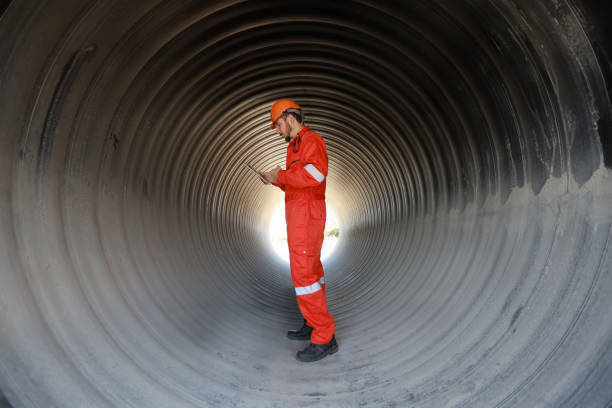Mine markers play a crucial role in underground navigation by providing clear guidance, identifying hazards, marking pathways, and ensuring safe and efficient movement of personnel, equipment, and vehicles within underground mining environments.
Here’s how mine markers contribute to underground navigation:
Route Identification: Mine markers help identify designated routes and pathways within underground mines, guiding personnel, vehicles, and equipment along safe and approved routes. Markers indicate the direction of travel, junctions, intersections, and critical access points, facilitating navigation and preventing unauthorized entry into restricted areas.
Hazard Warning: Mine markers are used to mark hazards such as steep slopes, low ceilings, confined spaces, unstable ground, water bodies, and ventilation ducts. Hazard warning markers alert personnel to potential dangers, prompting them to take precautionary measures, adjust their speed, or avoid hazardous areas to prevent accidents or injuries.
Emergency Egress Routes: Markers designate emergency egress routes and escape pathways in case of emergencies such as fires, explosions, collapses, or toxic gas leaks. Egress route markers provide clear directions to emergency exits, refuge chambers, evacuation points, and safety shelters, enabling rapid evacuation and rescue operations during critical situations.
Asset and Infrastructure Identification: Mine markers are used to label and identify assets, infrastructure, equipment, and facilities within underground mines. Marker codes, symbols, or alphanumeric codes on equipment or structures help personnel locate specific assets, access maintenance records, and follow operational procedures for equipment usage and maintenance.
Communication and Signalling: Mine markers serve as communication tools by conveying messages, instructions, warnings, and alerts to personnel and operators. Signage markers provide information on safety protocols, operational procedures, traffic rules, work zones, restricted areas, and regulatory compliance, promoting safe practices and awareness among workers.
Navigation Aids: Mine markers include navigation aids such as directional arrows, distance markers, reference points, and landmark indicators to assist personnel in navigating complex underground layouts and mazes. These aids help maintain orientation, prevent disorientation, and improve spatial awareness during underground operations.
Compliance and Standardization: Mine markers adhere to regulatory requirements, industry standards, and mine-specific guidelines regarding color codes, visibility standards, placement guidelines, and communication protocols. Standardized marker systems promote consistency, clarity, and ease of interpretation, enhancing safety, compliance, and operational efficiency in underground navigation.
Here are five frequently asked questions (FAQs) related to mine markers and their role in underground navigation:
What are mine markers, and why are they important in underground navigation?
Mine markers are visual indicators used in underground mining to mark routes, hazards, emergency exits, assets, and communication points. They are crucial for guiding personnel, vehicles, and equipment safely through complex underground layouts, identifying hazards, and ensuring compliance with safety protocols.
How do mine markers contribute to safety in underground mining operations?
Mine markers contribute to safety by providing clear guidance, marking hazards, designating emergency egress routes, communicating safety messages, and promoting awareness among workers. They help prevent accidents, reduce risks, facilitate emergency responses, and ensure adherence to safety regulations underground.
What types of information do mine markers typically convey?
Mine markers convey various types of information, including directional cues (arrows, signs), hazard warnings (slopes, restricted areas), emergency egress routes (exit signs, refuge chambers), asset identification (equipment codes, facility labels), communication instructions (safety protocols, traffic rules), and regulatory compliance information (colour codes, visibility standards).
How are mine markers designed to be visible and effective in underground environments?
Mine markers are designed with high-visibility colours, reflective materials, lighting options, durable construction, standardized symbols or codes, and strategic placement to maximize visibility and effectiveness underground.
They are tailored to withstand underground conditions such as low light, dust, moisture, and rugged terrain.
What role do mine markers play in emergency preparedness and response underground?
Mine markers play a critical role in emergency preparedness and response by marking emergency egress routes, indicating emergency exits, providing refuge chamber locations, and communicating evacuation procedures.
They help personnel navigate safely during emergencies, locate critical safety resources, and facilitate timely evacuation and rescue operations.
Overall, mine markers play a vital role in underground navigation by guiding movements, identifying hazards, facilitating emergency responses, communicating information, aiding navigation, ensuring compliance, and promoting a safer and more efficient working environment in underground mining operations.




